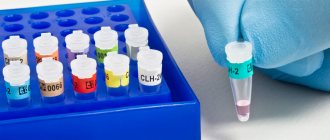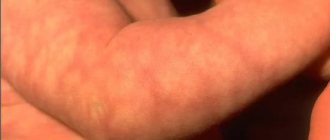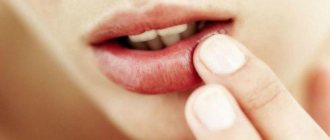What are Fordyce granules on the lips?
Fordyce spots are small white, yellowish skin granules that are visible on the lips, in places where sebaceous glands accumulate.
They appear under the skin, are harmless and non-contagious. These sebaceous secretions are named after the American dermatologist John Addison Fordis, who first described them in medical literature. The spots range in size from 1 to 3 mm and can be single or combined into one large group. The lips are clearly visible when stretched. The granules do not spread bacteria or viruses, so they are not classified as a disease, but only as a condition of human skin. White spots cause psychological discomfort, embarrassment of a person, and the quality of life decreases.
Types of Fordyce granules on the lips
Fordyce granules on the lips (which are treated if they grow very large) can appear in various forms:
- A small or large yellow-white bump on the edge of the lip.
- Single or numerous white painless nodules in the form of bumps on the red lip area.
- Granule-like cyst under the skin.
- White granular nodules that appear on the lip when it is stretched.
- White symmetrical roughness on both sides of the lip.
Sometimes granules are confused with protruding herpes. The difference is that oral herpes appears as fluid-filled blisters that burst and crust over.
Classification
Demodicosis (photo can be found below) is classified into 2 main clinical forms - primary and secondary. The first diagnosis is made in the event of a sharp surge in parasitic reproduction and effective treatment with the use of antiparasitic drugs. In most cases, it occurs in people over 40 years of age. The secondary form is diagnosed by identifying concomitant skin lesions and systemic diseases (usually associated with immunodeficiency). In some cases, this diagnosis is found in people taking epidermal growth factor receptor inhibitors and in those who have been exposed to ultraviolet radiation.
Based on the symptoms manifested on the skin, the following types of demodicosis are distinguished:
- Acneiform - the presence of papules and pustules similar to acne;
- Rosacea-like - papules appear due to diffuse erythema;
- Seborrheic - skin rash combined with peeling;
- Ophthalmic - inflammation of the eyelids, accompanied by discomfort in the affected eye.
Stages and degrees of Fordyce granules on the lips
Although these spots become noticeable during puberty, they are already present at the time of birth. They remain invisible until the teenage stage of a person.
At the next stage of development, during puberty, hormonal changes give rise to the appearance of nodules on the lips. According to doctors, this is facilitated by the close location of the sebaceous glands to the upper layer of the epidermis. Incorrect location of the glands, on the edge of the lips or mucous membrane, causes the appearance of nodules.
The spots become highly visible in older adults. This is due to the fact that the older a person gets, the more sebaceous glands he develops. They enlarge with age, causing Fordyce granules to grow and develop into white bumps.
Demodectic mange symptoms
Due to the fact that this disease can affect different areas of the skin, the clinical picture differs. In the cutaneous form, the following signs of demodicosis appear:
- Acne of varying severity: from small nodules and ulcers to rosacea;
- A strong tooth that causes discomfort. In most cases, it intensifies in the evening and night;
- Excessive sebum production. It is the greasy environment that is most nutritious for ticks of this genus;
- Red spots that are a symptom of high blood pressure in the blood vessels. This indicates the presence of an inflammatory process in the body;
- Nose enlargement. If you contact a dermatologist late or in the absence of adequate treatment, it is possible to replace the functioning tissue with connective tissue.
Demodicosis of the eyelids and eyes, in turn, manifests itself as follows:
- Clumping of eyelashes. Along their growth line, a thin layer of film is formed that has adhesive properties;
- Redness of the eyelids as a result of the inflammatory process;
- Tired eyes. This symptom occurs due to inflammation and due to the fact that the patient is forced to strain his vision;
- Eyelash loss caused by damage to hair follicles.
Factors provoking the appearance of neoplasms
Today there is no exact opinion about the reasons for the appearance of these papules, but there are still several reasons that should be considered provoking factors:
- Imbalance in hormonal structures. Usually this change is associated with the period of maturation, but sometimes with neoplasms in endocrine structures. Age conditionality. Adolescents during puberty are most susceptible to cyst formation. This is due to increased production of male hormones. Androgens lead to hyperplasia of glands of exocrine origin, which leads to increased secretion production by the sebaceous glands.
- Ignoring the rules of personal care and hygiene. The activity of pathogenic bacterial microflora serves as a good environment for the development of skin diseases.
- Injury. Damage to the ducts responsible for the removal of sebaceous glands leads to blockage and the development of this disease.
- Addiction to bad habits can provoke unpleasant consequences, including the occurrence of this pathology.
- Formation of secondary sexual characteristics or puberty. During this age period, white formations often appear on various parts of the body. In representatives of the stronger sex, Fordyce granules appear on the head of the male genital organ and on the foreskin surrounding it. Such manifestations are completely safe and do not provoke unpleasant sensations, in addition to an external cosmetic defect. In females, rashes from Fordyce's disease on the intimate organs are light or beige in color. When palpated, a rough surface is revealed. They do not provoke pain, do not cause itching and do not increase in size over time. They often go away completely after the period of sexual activity ends.
- Problems with the sebaceous glands or their incorrect location. Doctors say that people who have these manifestations of the body are most susceptible to cyst formation.
This disease is not caused by genetic factors and occurs in individual cases in each patient.
Wen on the body: reasons, how to get rid of it
A small growth on the skin, a pea-sized “nodule”, can cause anxiety and concern. Concerns increase if the formation begins to gradually increase in size. The specialist’s diagnosis of lipoma only adds fuel to the fire of worry, since it is very similar to the name of many dangerous malignant tumors.
In fact, there is no real reason for concern, since wen extremely rarely (almost never) degenerates into a malignant neoplasm. This is a benign tumor that is characterized by slow growth or stable size over a long period of time. Why wen appears on the body and how to deal with them, you will learn from the publication presented to your attention.
What is a wen?
Wen is an unofficial, “folk” name for a subcutaneous formation formed by adipose tissue. In official medicine, the scientific term “lipoma” is used, which reflects the histological composition of the tumor.
Lipoma is a benign tumor that remains as such throughout its existence. A wen on the body is not characterized by malignant degeneration. From this point of view, it does not pose a health threat. The problem is mainly of an aesthetic nature, especially if the tumor is located on an open area of the body - on the face, on the neck, on the skin of the distal parts of the arms.
A distinctive feature of any benign tumor is that it is formed from cells surrounded by a fibrous capsule. In this way, wen on the body differs from atheroma - another neoplasm, the appearance of which is caused by fat. Atheroma is an accumulation of sebum secreted by the sebaceous glands. Atheroma is formed due to blockage of the ducts of the sebaceous glands. The secretion of the gland cannot come out, accumulates under the skin and manifests itself in the form of a small or medium-sized formation that rises above the skin.
Lipoma, unlike atheroma, does not consist of the secretion of the sebaceous glands, but of fat cells surrounded by a capsule of connective tissue. A skin formation appears as a result of abnormally active division and growth of adipocytes. All cells, regardless of the size of the wen, remain differentiated, that is, they retain their typical characteristics, which makes it easy to distinguish a lipoma from a malignant tumor. A cancer tumor is characterized by impaired differentiation and atypical cell structure. In the case of lipoma, these signs of malignancy are not present.
Lipoma is a benign tumor of adipose tissue, which consists of differentiated adipocytes surrounded by a fibrous capsule. Malignant degeneration is not typical for wen on the body; they do not pose a danger to health or life.
Reasons for the appearance of wen
Numerous studies devoted to the problem discussed in the publication have not made it possible to establish a single cause of lipomas. Currently, it is generally accepted that a wen on the body appears as a result of the combined action of a number of predisposing factors, among which endogenous causes predominate.
Among the risk factors, the most important role is played by metabolic disorders associated with enzymatic deficiency. Particularly dangerous in this regard are disorders affecting the biochemical mechanisms of lipid and carbohydrate metabolism. The cause of lipoma can be hormonal disorders not related to the pathology of the endocrine system. In particular, in women, a neoplasm can appear during pregnancy, lactation or after the end of the lactation period.
Endocrine diseases are also among the risk factors. If a person has wen on the body, the reasons should be sought in the functioning of the hormonal system. Dysfunction of the pituitary, adrenal, thyroid (hypothyroidism) or pancreas (diabetes) may be the root of the problem. A risk factor is an imbalance in the secretion of sex hormones, which is important for women taking oral contraceptives and athletes using pharmacological agents to accelerate results.
A fatty deposit on the body can occur even against the background of complete well-being, that is, in the absence of any endocrine disorders, hormonal changes or metabolic problems. Doctors explain this by genetic predisposition: people whose relatives have encountered a similar problem have a higher risk of developing lipoma. Hereditary, or familial, lipomatosis is characterized by the appearance of multiple wen at a young age.
Among exogenous factors, nutrition is of greatest importance. The risk of lipoma is higher if a person's diet is dominated by simple carbohydrates (sugar, confectionery, flour), as well as saturated and hydrogenated fats. A risk factor is systematic alcohol consumption. All these substances interfere with the natural course of metabolic processes, which is fraught with the formation of a benign tumor of adipose tissue.
Another possible cause of the appearance of a wen on the body is mechanical trauma, which leads to neurotrophic disorders in the integumentary tissues. They, in turn, can provoke the proliferation of subcutaneous fat cells. It is possible that exposure to ultraviolet radiation on the skin plays a certain role, but the connection between this factor and the appearance of lipomas has not been proven.
Localization, appearance, symptoms
The concept of “typical localization” does not apply to wen on the body. The tumor can appear on any part of the body: on the back of the foot or hand, on the shoulder or forearm, on the back, on the chest, on the face or on the abdomen. In short, lipoma does not have a “favorite” location; the tumor can appear anywhere.
As for the symptoms, that is, the appearance of the tumor, there is more certainty. Externally, the lipoma looks like a pea; it is characterized by a rounded shape with regular and even edges. On palpation, the adipose tissue tumor is soft or moderately dense. The surface is smooth. The color can be flesh-colored, reddish or brownish, depending on how abundantly blood vessels grow into the tumor.
An important diagnostic criterion is the mobility of the tumor. The subcutaneous wen on the body is always mobile; it is not fused to deeper tissues and moves freely with the skin. This symptom makes it easy to distinguish a lipoma from a malignant tumor. The latter grows into deep tissues, which is why it becomes immobile.
Size is difficult to use as a diagnostic criterion because it can vary over a wide range. Typically, a fatty tissue tumor has a diameter of 0.5 to 1 cm, but there may be exceptions to this rule. Wen on the body can reach 2-3 cm in diameter. There are cases when, as a result of growth, a lipoma reached gigantic sizes - more than 10 cm in diameter.
The last symptom - pain - is not typical for wen. As a rule, education does not remind us of itself. The exception is situations when a person mechanically injures him. When struck, scratched or pinched, a sharp pain may occur, which is not too intense and passes quickly. However, if a tumor of adipose tissue puts pressure on superficial vessels and nerves, the clinical picture may include moderate or even severe pain.
Are wen dangerous?
As already mentioned, the prognosis for this benign tumor is extremely favorable. The neoplasm is not characterized by malignant degeneration, so nothing threatens life. However, this does not mean that you can forget about lipoma, since certain health risks are still present.
In case of mechanical damage (cut, pinching, blow) inflammatory processes may begin in the depths of the formation. If the integrity of the skin is damaged, there is a risk of infection in the wound. The result of this may be the development of a necrotic or purulent-inflammatory process, after treatment of which visible scars will remain on the skin.
Scars can also form after removal of a large tumor. A small lipoma can be removed without leaving a trace, so that there are no noticeable scars left on the skin. When removing large and giant wen, it is difficult to avoid scar changes. Meanwhile, large wen must be removed, since sooner or later they will begin to put pressure on the nerves and blood vessels. It follows from this that it is better to get rid of the wen at an early stage, before it grows to a large size, the only question is how to do this?
How to get rid of wen?
Many people, in an attempt to get rid of the tumor, resort to traditional medicine recipes. Numerous publications devoted to this problem offer various remedies: compresses made from onions, garlic or sprouted wheat, applications of celandine and other medicinal herbs. Unfortunately, such an approach is doomed to failure; it is not possible to get rid of education using folk remedies. Traditional recipes are unlikely to provoke the growth of a lipoma, but they certainly will not lead to a reduction in its size.
Official medicine offers two options for solving the problem. You can get rid of small lipomas using a minimally invasive procedure, which involves injecting a special solution deep into the formation that destroys adipocytes. The disadvantage of this method is that there is a high risk of relapse, the capsule is not removed, and the method can only be used for small (up to 2-3 cm) tumor sizes.
Surgical removal of a wen on the body is an effective and universal treatment method. The lipoma is removed along with the surrounding capsule. Minor surgery is performed using a traditional, radio wave or laser scalpel. Accordingly, traditional surgical, radio wave and laser removal are distinguished.
All methods of surgical treatment are effective, but from an aesthetic point of view they are not equivalent. After traditional surgical removal of a tumor, small scars often remain, even if the doctor removes a small tumor. Radio wave surgery allows you to minimize the severity of scars, and the laser method makes it possible to perform the operation absolutely without leaving a trace.
Laser lipoma removal has many benefits. The laser knife seals the vessels immediately after they are damaged, reduces bleeding, and injures the skin to a lesser extent. Since laser pulses have a detrimental effect on pathogenic and opportunistic microflora, there is no risk of infectious complications. In addition, the laser stimulates regeneration, which shortens the recovery period, accelerates skin healing and avoids scar formation.
The problem is that the laser method is used only for medium-sized and small-sized wen; large and gigantic ones (more than 10 cm in diameter) are forced to be removed by the doctor using the traditional surgical method. Given their size, it is almost impossible to avoid scar formation.
Since the aesthetic component of the operation is a concern for all patients, doctors recommend removing lipomas in the early stages. The deciding factor is the size of the education. A tumor on the face can be removed without a trace if its diameter does not exceed 1 centimeter. Wen on the body are removed without scarring if their size is no more than 2.5-3 cm.
Laser removal of wen is the most effective and safe method. It is better to remove lipomas in the early stages, when their size does not exceed 1 cm if localized on the face or 3 cm if localized on the body.
The operation is performed on an outpatient basis under local anesthesia; only giant lipomas require the use of general anesthesia (anesthesia). The patient returns home on the day of surgery. During the recovery period, it is necessary to protect the skin from ultraviolet rays and avoid exposure to high or low temperatures. It is advisable not to wet the wound with water and regularly treat it with antiseptic solutions.
Removal of fatty tissues on the body: price
Surgeries to remove fatty tissue are carried out in aesthetic medicine and plastic surgery clinics. It is advisable to contact a medical institution equipped with modern equipment for laser manipulation.
The price of removing wen with a laser is low.
The exact cost depends on the size of the education. The cost of removing a small lipoma (up to 3 cm) in Moscow clinics is about 5 thousand rubles. The cost of treating a tumor up to 10 cm in size increases to 8-9 thousand rubles. Treatment of large and giant lipomas costs more - up to 15 thousand rubles, depending on the size of the formation and the category of complexity of the operation. You will receive more detailed information about lipoma removal methods during a consultation with a doctor at the Galaktika aesthetic medicine clinic (Moscow)
Symptoms of Fordyce granules on the lips
The normal sebaceous glands located under the skin are not visible.
In the case of Fordyce granules, the glands are visible and have characteristic symptoms:
- They appear in the form of distinct bulges in the affected lip area.
- They are reddish, white or pale yellow in color.
- May form individual nodules or clusters.
- Their size ranges from 1 to 3 mm in diameter.
- The rashes do not bother or cause itching.
- Sometimes they spread to the surrounding skin.
- The lips become pale pink or have a yellowish tint.
- They are easily visible when the lips are stretched.
- The shape resembles small rice.
- In rare cases, they cause mild itching.
Demodicosis of the ear
This pathology does not always stop at the face. In advanced cases or in the absence of timely treatment, it spreads to neighboring areas of the body, including the ears. In such a situation, it will not be possible to quickly get rid of demodicosis, especially without medical help. Damage to the auricle is accompanied by the following clinical symptoms:
- Intense itching and irritation of the skin. As a result of constant scratching, bruises and microtraumas appear;
- Hyperemia and swelling of the ear, indicating an inflammatory process;
- The presence of red rashes of varying sizes and quantities;
- Pain upon contact with the skin (often a consequence of a violation of the barrier function of the tissue).
What Fordyce granules look like on the lips
Fordyce spots on the lips are white or yellowish cysts. The diameter of the papule does not exceed 2 mm. Sizes may vary on other parts of the body. The variety on the genitals is called pearlescent papules or Fox-Fordyce disease. The contents of the capsule, according to histology, are lipid tissue. The number of Fordyce granules depends on the individual characteristics of the patient.
They do not pose a health hazard, do not degenerate into malignant tumors, and do not cause suppuration of the lips. Possible itching and discomfort. In this case, the dermatologist will prescribe antihistamines.
It is dangerous to attempt to remove Fordyce granules on your own. A purulent process may develop.
At the same time, the likelihood of completely getting rid of papules is extremely low. After attempts at self-removal, wounds and cracks form, keloid scars and seals in the lip tissue may develop.
Are they dangerous?
Many people are concerned about the question of whether Fordyce granules are dangerous, and the answer can be clearly answered in the negative.
They do not pose any harm to health, even theoretically.
But the pathology associated with their appearance, and especially infection after attempts to squeeze them out, become a big problem. This problem, if it does not threaten human life, at least threatens with significant complications and a long-term struggle with the developed disease.
Diagnostics
To make an accurate diagnosis, a dermatologist needs only an external examination of the affected area. Although Fordyce granules are not a contagious disease and do not pose a danger to human health, it is still worth contacting a specialist to differentiate the disease. Sometimes rashes are mistaken for manifestations of more dangerous skin ailments:
- molluscum contagiosum;
- focal eczema;
- neurodermatitis;
- lichen planus.
If the doctor rejects all suspicions and the rash turns out to be Fox Fordyce granules, then there is no need to treat them.
Features of treatment of the disease
Treatment of Fordyce granules on the lips is indicated in the presence of a significant cosmetic defect. As practice shows, after 40 years the intensity of the sebaceous glands decreases, papules resolve on their own.
The dermatologist chooses the treatment tactics. This may be drug therapy. It requires a significant amount of time, but all procedures are non-invasive and there is no risk of complications or infection with bacterial flora.
If the use of drugs is ineffective, Fordyce granules formed on the lips are removed using a laser or radio waves. Cryodestruction is not used - it is impossible to control the depth of tissue freezing.
In the hospital
The oily water-based drug Retin-A is highly effective in treating the disease. The drug is available in several forms: cream, gel, solution. It has a therapeutic effect on facial skin defects (acne, wrinkles, pigmentation, warts, keratomas, Fordyce granules). Apply a thin layer of ointment overnight to the damaged areas, leave on the skin for 6 hours, after which the residue is washed off with warm water. The duration of treatment is prescribed by the doctor.
The pharmacological action of the drug is aimed at suppressing the active production of subcutaneous sebum, which minimizes the disease. Before use, you should consult a dermatologist or cosmetologist.
Jojoba plant oil, which has moisturizing, nourishing, regenerating, and soothing properties, has a positive effect on regulating the functioning of the sebaceous glands. Lubricate the face in the form of a mask at the rate of 1:2, 1:3. Apply the mixture to a clean face for 20 minutes, then rinse off.
The pharmacy offers antihistamines and anti-inflammatory medications. If treatment does not have an effect on the cysts, then surgical intervention is resorted to. Surgery is a painful method. In particular, they try to avoid the formation of scars and give preference to gentle techniques.
Modern medical centers offer to cure the disease in the following ways:
- Laser removal.
- Electrocoagulation with minimal current exposure.
- Radio wave technique.
- Cryotherapy (removal using liquid nitrogen).
The laser acts on the affected area, excising formations on the skin. The procedure is one of the best methods to remove granules.
High frequency current therapy quickly and painlessly dries up the fluid in Fordyce's papule. As a result of cutting off the nutrition, the pimple dies and there is no bleeding.
The method, using high-frequency waves, completely excises the formation, leaving no traces. The radio wave technique is the most gentle of all ways to remove sebaceous cysts.
Cosmetic
You can get rid of Fordyce's disease on the lips using minimally invasive cosmetic procedures. No preliminary preparation is required, but all activities must be carried out by a doctor at a medical institution, in compliance with the rules of asepsis and antiseptics. Pain relief is local using ointments or sprays based on lidocaine.
Methods for removing Fordyce granules localized on the lips:
- Laser – treatment of the affected area with a beam of laser radiation allows you to safely remove the tumor. The device evaporates the upper layer of the dermis and the fatty lump layer by layer. The likelihood of infection when granules are removed is minimal.
- After laser treatment of Fordyce lesions, a scab forms on the lips. It is prohibited to touch or remove it yourself. Otherwise, you will get an infected wound and a scar. Correcting them is problematic even with the use of filler. After some time, the scab will come off on its own.
- The radio wave method is similar to laser destruction. But high frequency radio waves are used. After processing the granules, a crust forms, which will fall off on its own within 7–10 days.
- Cryodestruction with liquid nitrogen is not carried out; it is impossible to control the depth of freezing of granule tissues. The method is used only when other methods of removing Fordyce tumors are unavailable. Possible complications are the formation of extensive scars on the lips and keloids.
- Electrodiathermocoagulation is not performed. This is a painful method. Possible burns to healthy tissue.
Specialized wound care is not required during the rehabilitation period after removal of Fordyce granules. It is enough to follow the rules of hygiene, exclude bacterial infection of the wound, and do not try to remove the crusts yourself.
Traditional methods
If the granules on your lips are small in size, you can try to get rid of them with home remedies. Lemon and orange juice contain large amounts of vitamin C, which is an active ingredient in the fight against stains.
Recipe Ingredients:
- Mix ¼ cup lemon juice with an equal amount of orange juice.
- Soak a cotton swab in the mixture.
- Apply to affected areas and let dry.
- Repeat the procedure 3-4 times a day until the spots disappear.
The antioxidant properties of apple cider vinegar help get rid of granules.
How to use:
- Soak a cotton swab in apple cider vinegar.
- Wet your lips, and after 10 minutes, rinse the vinegar with water. Repeat the procedure 1-2 times a week.
- To enhance the effect, you can drink ¼ glass of apple cider vinegar diluted with water daily.
- Continue the procedure until the granules completely disappear.
The healing properties of olive oil help remove white plaque on the lips. By softening and moisturizing the skin, olive oil promotes the free passage of sebum through the pores.
How to use:
- Wash the affected area of skin with warm water and dry with a towel.
- Apply a few drops of olive oil to your lips.
- Leave it overnight.
- Repeat the procedure until the white coating in the form of bubbles disappears.
An effective home remedy is garlic juice. Antioxidant properties will help with lipid metabolism disorders in the body, which manifest themselves as Fordyce spots on the lips.
- Crush 1 clove of fresh garlic.
- Mix the pulp with 1 cup of warm water and drink.
- Drink the solution daily until the stains disappear completely.
If you cannot drink garlic juice, you can add fresh garlic to your weekly menu. Coconut oil helps in treating skin diseases. It has antimicrobial and antibacterial properties.
- Apply a few drops of oil to your lips several times throughout the day and leave until completely absorbed.
- You can combine coconut oil with lavender essential oil.
Aloe vera cream helps a lot. The herb has natural healing properties that help remove uneven lips. The cream is applied to the affected surface every evening until the stains are completely removed.
Tea tree oil cream or pure oil provides skin protection. This oil is very beneficial because it protects the top layer of skin from hormonal changes that are triggers for the development of Fordyce spots. It is advisable to include dishes with spinach, asparagus, and broccoli in your diet. They are rich in folic acid, vitamins and minerals that will help clear your skin.
Whitehead Removal
To remove such a skin problem, a specialist may offer several cleaning procedures to choose from:
- Laser coagulation (painless treatment of problem areas using a laser).
- Mechanical removal (violation of the integrity of the eel using a sterile needle, squeezing out the contents).
- Electrocoagulation (exposure to problem areas with alternating current using an electrocoagulator needle).
Treatment of such “problems” by a cosmetologist guarantees their rapid disappearance and the absence of relapses if hygiene rules are followed.
How to care for lips with Fordyce granules
There are no clear recommendations for lip care. Tattooing will help hide skin imperfections. There is an alternative and simple method - camouflage with a high-quality foundation and then cover your lips with gloss or lipstick.
If the blisters open on their own, you need to regularly treat the areas with an antiseptic medicine (iodine, brilliant green, hydrogen peroxide, salicylic acid). This must be done to prevent possible inflammatory disease.
Skin demodicosis
The transmission route is contact or contact-household. Can be transmitted through contaminated clothing, bedding, contaminated hands and more. Demodex is distinguished by its survivability under comfortable conditions that correspond to the daily life of most people. The parasite remains viable at a temperature of 17-20°C for 10 days or more, and in an aquatic environment at a temperature of 12-18°C for 3 days. When water is heated to 50° C, the microorganism dies within one minute, and at low temperatures it dies immediately.
To date, there is no single theory explaining the etiology of the development of the inflammatory process and the active reproduction of mites. But there are several predisposing factors that can provoke these processes:
- Excessive sebum production;
- Improper skin care, abuse of cosmetics (especially low quality);
- Long-term use of external corticosteroids;
- Poor nutrition (abuse of sugar, soda, spicy foods, coffee, alcoholic drinks);
- Concomitant gastrointestinal diseases;
- Reduced immunity;
- Hormonal imbalance, excess weight;
- Psychological problems, frequent stress.
Can they occur after lip augmentation?
In medical practice, I have encountered complaints from clients of beauty salons where lip augmentation surgery was performed with hyaluronic acid. The dissatisfaction consisted in the appearance, often on the upper lip, of “yellowish spots”, which were not observed in patients before the procedure.
The fact is that these same “yellowish spots” are nothing more than Fordyce granules. But the reason for their appearance was not the operation at all - it only enlarged the tumors, since the area of their localization also increased. And the granules were there before, only they were barely noticeable to their owners.
Therefore, before deciding on a cosmetic procedure, you should pay attention to the condition of your lips before.
Experts have noticed a significant reduction in spots or their complete disappearance without therapy in patients who have reached 35-40 years of age. They claim that this is due to a decrease in the functionality of the sebaceous glands due to a decrease in hormone levels in the blood.
Demodectic mange of the eyelids
Treatment of demodicosis of the eyelids requires a comprehensive approach and qualified medical intervention. Demodectic blepharitis is a chronic disease that occurs with periodic exacerbation and remission. It has the following clinical picture:
- Severe eye fatigue associated with the need to strain to better focus on an object or letters;
- Intense itching in the eyelashes and eyebrows. Often this symptom intensifies with external exposure to heat, in the evening and at night;
- Foreign body sensation, burning and tingling that does not go away after washing or scratching;
- Sticky discharge from the eyes after waking up;
- Accumulation of foamy contents in the eye corners;
- Hyperemia, swelling and thickening of the eyelids (especially at the edges).
- The chronic form of demodectic blepharitis can be complicated by keratoconjunctivitis, keratitis and dry eye syndrome. Therefore, it is strongly recommended to consult with an ophthalmologist at our clinic, who will be able to prescribe preventative and therapeutic therapy aimed at maintaining eye health.
Possible complications
Fordyce spots on the skin do not disappear on their own, without treatment, but there are two possible development options:
- Over time, the spots become small and invisible, and the skin condition improves.
- As the spots grow, they become larger and the condition of the skin worsens. This usually happens with age and then treatment is necessary.
If left untreated, Fordyce granules on the lips can spread to the mouth.
In many cases, Fordyce spots can be lifelong due to irreversible hyperplasia of the sebaceous glands. The presence of a large number of spots in the oral cavity and on the lips is associated with the development of hyperlipidemia. This condition can cause heart disease due to increased levels of fat in the blood.
According to research, it has been found that 87% of people with hereditary colorectal cancer have Fordyce granules in their mouth. The results of this study make it possible to identify families at risk of developing this type of cancer by analyzing the presence of Fordyce spots.
Fordyce granules are a harmless but distressing disease. An easy way to get rid of lip stains is to eat healthy, take vitamins, and then you may not need treatment.
Is relapse of the disease possible?
Sebaceous glands are an essential part of the skin. Granules can form repeatedly on the lips. To avoid relapse, you should stabilize your hormonal levels and reduce stress. You may have to contact doctors of related specialties - a gynecologist for women and an andrologist for men.
If the granules do not cause physical discomfort, then it is better not to touch them. If there is a pronounced cosmetic defect of the lips, you should consult a dermatologist.
He will examine the suspicious spot using a dermatoscope with multiple magnification, rule out the malignant nature of the neoplasm and prescribe effective treatment. Only in this case will the result please you and you will be able to get rid of Fordyce granules on your face.
What is this?
Demodicosis in humans develops as a result of reproduction in the hair follicles, sebaceous glands of the skin and meibomian glands of the iron mite (Demodex). The breeding ground for the development of this parasite is sebum, so its main habitat is the skin of the face and external ears. But with a complicated course and lack of timely treatment, the skin of the chest and back is involved in the pathological process.
It is important to understand that healthy people can also be carriers of such a tick, since it is a representative of normal microflora. According to official statistics, about 60% of people are infected with Demodex, but not everyone develops this parasitic disease. Demodicosis of the body develops with the slightest disturbance of the biocenosis and a drop in immune defense.
Prevention of occurrence
Cosmetologists advise following certain preventive measures to avoid relapse of the disease: leading a healthy lifestyle, eating a balanced diet, not being nervous, and regularly rinsing your mouth after each meal.
If you find white spots on your lips, you should consult a doctor. The cause identified in the early stages contributes to correctly selected treatment. The main key to recovery is to eliminate the factor that causes white rashes.
Sources:
- https://healthperfect.ru/granuly-fordaysa-na-gubah.html
- https://NaTele.net/granuly-fordaisa/
- https://VashaDerma.ru/dermatologiya/syp/granuly-fordajsa-na-gubah
- https://gb4miass74.ru/bolezni/granuly-fordajsa.html
- https://CoriumMed.ru/papuly/granuly-fordajsa-na-gubah.html
- https://ProGuby.ru/bolezni/granuly-fordajsa-na-gubah
This is interesting: Burning tongue - possible causes and how to treat it?











